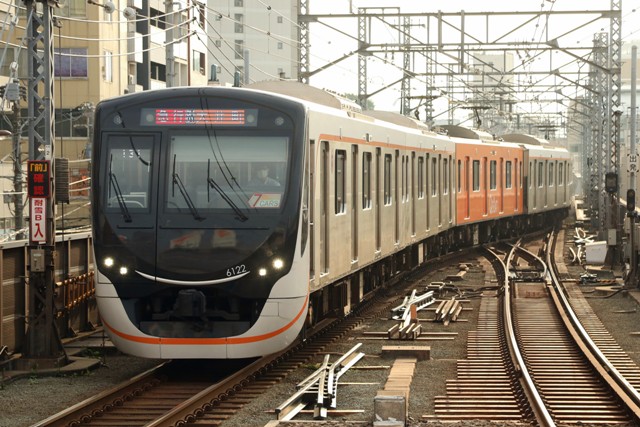 |
| EMU 6020 series, including orange-colored Q-SEAT car, arrives at Oimachi station |
 |
| Interior of the Q-SEAT car (cross seat mode), the EMU Tokyu 6020 series Official information about the rollingstock of Tokyu Railways (in Japanese): |
 |
| EMU 6020 series, including orange-colored Q-SEAT car, arrives at Oimachi station |
 |
| Interior of the Q-SEAT car (cross seat mode), the EMU Tokyu 6020 series Official information about the rollingstock of Tokyu Railways (in Japanese): |
JR East recently announced that the double-decker Shinkansen (new trunk line) train, the EMU E4 series, will soon be retired from the track.
The E4 series was launched in 1997 as JR East's second generation double-decker Shinkansen train. It's operated on the Joetsu Shinkansen as super-express trains named Max-Toki and Max-Tanigawa. The E4 series consists of 8 cars, which can accommodate 817 seats in one set; so, a maximum of 1,634 seats are available, when two sets of the E4 series trains are connected. It's the world's largest high-speed train. Although its speed is limited to a maximum of 240 kilometers per hour, it's utilized as a dependable monster train to transport large numbers of passengers during rush hour. I sometimes used the E4 series on my business trip to Niigata. The best advantage was its good view from the upstairs window.
Who is the successor of the E4 series? It's the E7 series. Its maximum speed is 260 kilometers per hour... faster than the E4 series, but just a single-decker train. Why? Barrier-free policies might have affected the retirement of the E4 series. As you know, many countries including Japan are promoting a barrier-free society. A double-decker train with stairs wouldn't be suitable for the barrier-free society. We can't go against the global trend.
The last run of the E4 series will be on October 17th. Sayonara (good-bye) and arigato (thank you), the E4 series double-decker Shinkansen train.
Official website on the E4 series: https://www.jreast.co.jp/niigata/maxlastrun/
 |
| EMU Tokyo Metro 18000 series travels on the Tokyu Den-en-toshi line |
 |
| EMU Tokyo Metro 02-80 series stands at Honancho station |
 |
| Side view of the EMU Tokyo Metro 02-80 series |